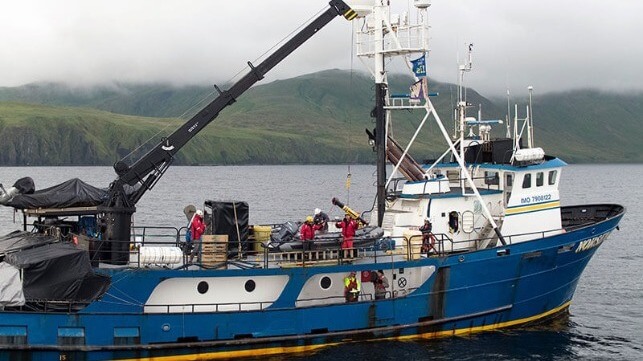NOAA Agrees to Help Find & Honor Lost Servicemembers From Past Wars

The National Oceanic and Atmospheric Administration (NOAA) accumulates a vast amount of ocean survey data, and its research vessels travel to far-flung destinations that few people visit. Its capabilities are useful for a variety of civilian and defense purposes, and it is adding one more important mission to the list: finding and honoring lost American servicemembers from past wars.
NOAA has reached an agreement with the Pentagon's Defense POW/MIA Accounting Agency (DPAA) to share data and work together on ocean expeditions that contribute to DPAA's mission - locating, recovering and identifying the remains of lost U.S. soldiers and sailors. The two agencies have worked together before - most recently, during a search for a missing WWII B-25 bomber off Alaska - but the agreement lays out a framework for extensive collaboration. Future partnerships could include joint expeditions and personnel exchanges; data-sharing from research cruises; technical advisory services, equipment and facilities for DPAA's use; and reciprocal access to DPAA-sponsored vessels and assets for NOAA scientists.
"NOAA’s expertise is world-renowned, and we are excited about this partnership and our collective commitment to keep our nation’s promise to provide the fullest possible accounting for those still missing from past conflicts,” said Fern Sumpter Winbush, DPAA’s Principal Deputy Director. “Our agencies will learn from one another as we stretch the limits of technology to search for those still missing since World War II, and as we provide answers to their families.”
The two agencies have collaborated successfully in the past. In 2018, a joint team traveled to the remote island of Kiska, Alaska, to survey waters where U.S. and Japanese forces fought during World War II's Aleutian campaign. The expedition, which was funded by NOAA and coordinated with DPAA, discovered the missing stern section of the USS Abner Read, a Fletcher-class destroyer that struck a Japanese mine on August 18, 1943. The mine blew off Read's stern section, killing 70 crewmembers and leaving one missing - but the warship stayed afloat. The destroyer USS Bancroft came to her aid and kept her from drifting into a known minefield. She was repaired and redeployed to the Western Pacific, and she was sunk by a Japanese dive bomber in the Leyte Gulf in November 1944.
Using detailed historical records and advanced multibeam sonar, a joint NOAA-DPAA team found the wreckage of Read's 75-foot stern section off Kiska in 2018. They used an ROV to capture imagery of the growth-encrusted wreck, and they held a memorial service for the lost servicemembers resting in the waters below.
No comments:
Post a Comment